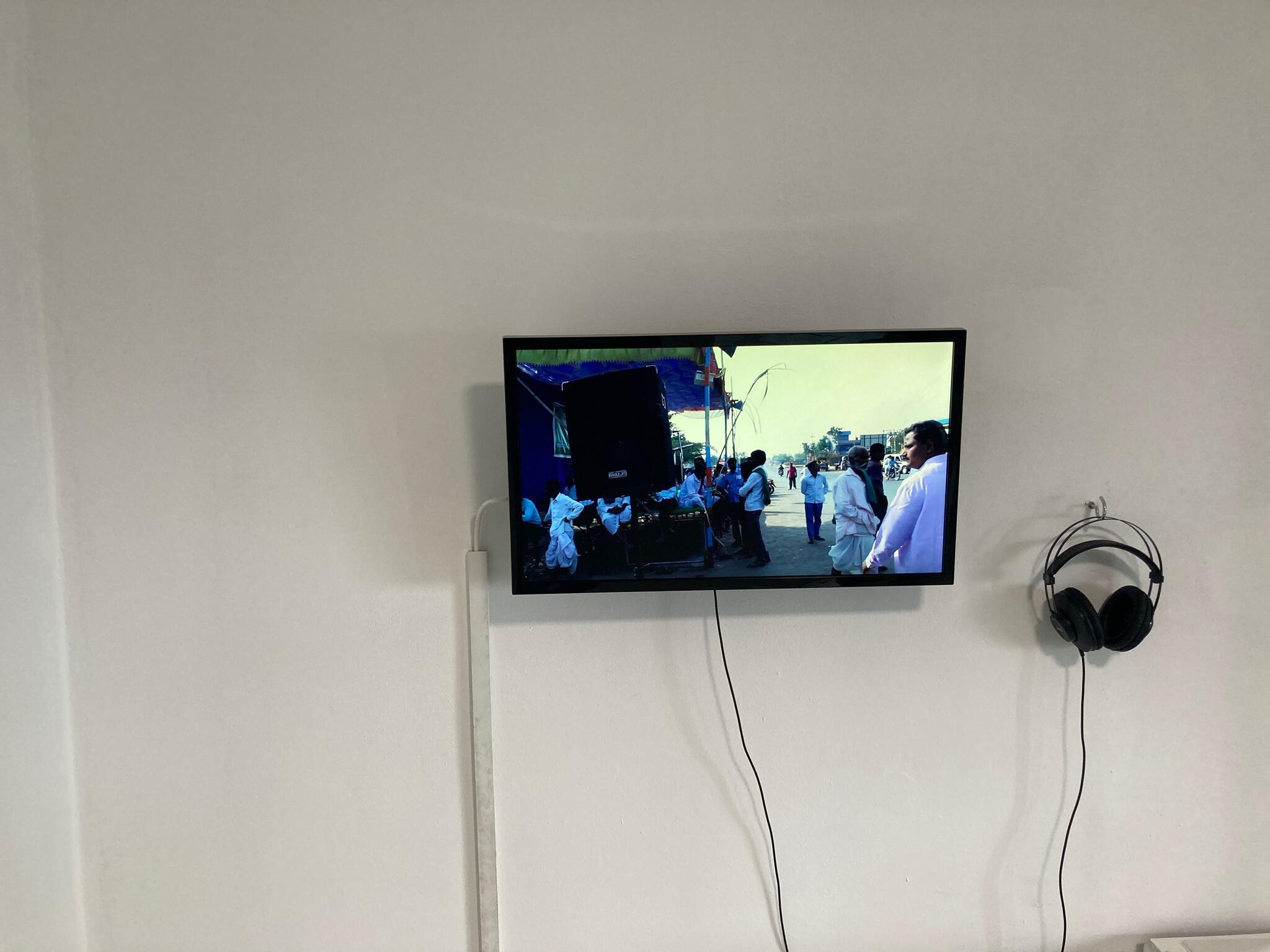
chalo una
(Come! Let's march to Una.)

“Yes, everything is simple. It’s people who complicate things.“ -Albert Camus
What is the act of filming, if not simply having an idea, placing a camera and start rolling? Maybe we would need to add into the mix the editing time, the sound, the montage… Film seems to be the ideal practice space in which a piece of complex machinery is turned into a simple “make-believe”. What power does the cinematic hold and still reminds us of the stories of how the spectators in the first Lumiere brothers’ projections would run away from the incoming/projected train? The illusion of the real is at play in the cinematic, and there is nothing more socially-engaging when one thinks of art than the one that can play with just that: the construction of the illusion of reality.

When I first encountered Ujjwal Kanishka Utkarsh’s work, it felt too simple, almost annoyingly simple. I could have overlooked it, but something made me stop and watch it again with more care and openness. His short film “Purna virama”, translated into English as “The last stop” (2009), portrays the almost-machinic dismantling of a bus in a junkyard in India. What was this apparent simplicity? What was this almost bare act of filming? The act is simple: the filming of the destruction of a bus into its parts. Of course, the film is not only what it depicts but how it depicts it—the positioning of the camera, the distance from its “subject”, and the composition. “Purma virana” allowed me to see, through the breakage of the bus, the possibility of dismantling the rusty (?) and powerful machinery that film represents. Ujjwal’s reflection on the cinema goes to its core: What is the political act being performed whenever one places a camera somewhere?
With the absolute certainty that there is no simplicity in the placing of any camera or the production of images in a world motored by semiology. Where does it make sense to place one’s camera? How to continue the path that a part of the soviet film tradition carved out in order to enhance the political potency of film for the construction of a more egalitarian and critical society?
Ujjwal bets on the ghosts. The ghosts of the thousands of protestors who walked in 2016 from Ahmedabad towards Una to make public the caste-related violence that is part of daily life in India nowadays. With a camera as a notebook, Ujjwal places the camera in the now empty spaces of the anti-caste rally. He talks to the leaders and the people involved in the movement. He observes the dogs lying down, the rain falling, and the continuous meandering of the motorbikes. He observes time. Can we hear the voices that continue to be silenced through his filming act? Can we feel through a camera that works hard against itself not to create a spectacle?
This exhibition, homonymous to the film, searches for the audience to take a slower step into entering a film. As a vestibule to a projection, it searches for the stitches, the dialogues, the people, the ideas, and the rumors that surround the film but eludes it.
-curatorial text by Frida Robles.
Documentation of the display of some of the works@the eXhibition
-photos by Laura De Vargas, Fabrikraum
(slide show//click to make full screen)













credits
exhibition by
ujjwal kanishka utkarsh
organised by
fuvu_fuerunsvonuns
(ivie isibor, ava binta diallo and frida robles)
curated by
frida robles
the team@fabrikraum
(cagdas cecen, deniz güvensoy, gunesh doğan, laura virginia de vargas and sezer dilan zirhli)
collaborators
eXhibition setup
judith lava
masimbah hwati
paul kotal
rajarshi sarkar
vrishali purandare
poster illustration and design
deepani seth
attendance sheet
kunika kharat
vrishali purandare
in conversation with booklets (work in progress)
coordination and layout: deepani seth
transcription help and proof reading: aditi banerjee, vedika kruti
hindi typing : (himani varsheey, mahezbin, shikha gupta, shreya)
map projection
embroidery: hafee
tailoring: pandit master
co-ordination: shyamolie kate
chalo una film
end credits on screen
the gaze as a protest
end credits on screen
thanks
alfredo ledesma quintana
alix eynaudi
bhawna ramrakhiani
janneke van dalen